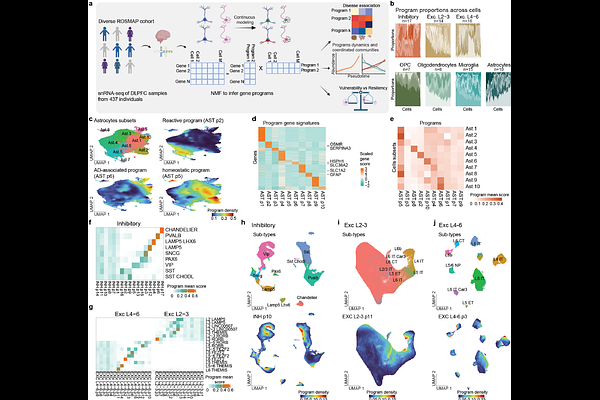Early neuronal reprogramming and cell cycle reentry shape Alzheimer's disease progression

Early neuronal reprogramming and cell cycle reentry shape Alzheimer's disease progression
Meir, R.; Schwartz, G.; Adam, M.; Avni Lapidot, A.; Cain, A.; Green, G. S.; Menon, V.; Bennett, D. A.; De Jager, P.; Habib, N.
AbstractAlzheimer\'s disease (AD) is a progressive neurodegenerative disorder characterized by hallmark pathologies, synaptic dysfunction, neuronal loss, gliosis and cognitive decline-dementia. Recent large-scale cell atlases of human AD brains exposed vulnerability of specific neuronal subtypes and highlighted early, coordinated glial responses, suggesting glial involvement in disease progression. However, the timing and nature of neuronal changes, differences between neuronal subtypes, and their coordination with glia remain unclear. Here, we used non-negative matrix factorization to identify co-expression gene programs in single-nucleus RNA profiles from the prefrontal cortex of 437 samples from donors whose clinical symptoms ranged between no cognitive impairment and AD dementia. This approach identified early coordinated transcriptional changes across all neuronal subtypes, preceding clinical symptoms of cognitive decline, and validated in independent snRNA-seq, proteomics, and ELISA datasets. We found neurons in AD undergo rapid modulation of synaptic genes, accompanied by convergence of neurons into two distinct programs: An oxidative stress and apoptosis program abundant in vulnerable neuronal subtypes, and a DNA damage and cell-cycle reentry program associated with resilient subtypes. Moreover, neuronal reprogramming was closely tied to glial responses, and diverged between AD to non-AD brain aging, suggesting neuro-glial coordinated reprogramming shapes the AD cascade and influences disease outcomes.